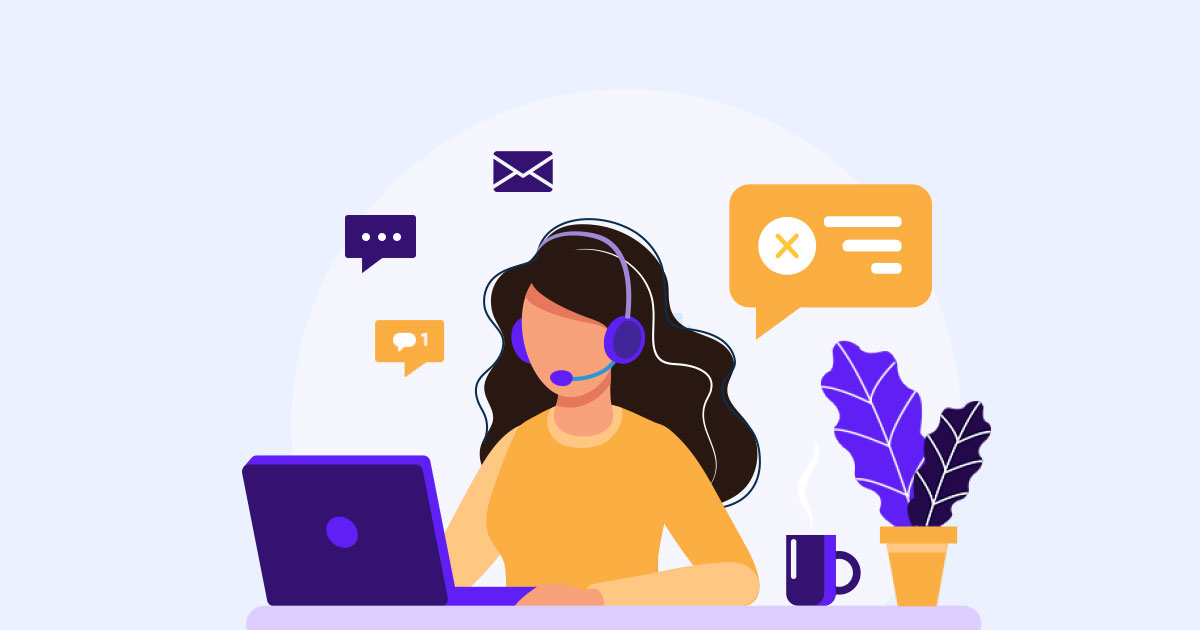Customer experiences have a significant impact on factors that directly affect revenue. They influence purchasing decisions, customer loyalty, and brand perception. It was recently found that improvements in customer experiences can lead to as much as a $1 billion increase over three years (1). This is likely why nearly half of organizations today are planning to make customer experiences a top priority (1). One of the most effective tools your company can utilize to improve customer experiences is your customer service training programs.
Effective customer service training can significantly improve the quality of service your organization’s employees provide. However, there are some common mistakes that should be avoided when developing customer service training programs today.
Using a One-Size-Fits-All Approach
Common mistake organizations often make when developing their customer service training programs is to approach learning as a single event. Learning should be a continuous process. This is even more true today because the current business climate is constantly changing. Regular training provides your business with an opportunity to make sure customer service teams are all on the same page and are equipped with the most accurate information.
Developing a series of comprehensive customer service training courses will help your business integrate training into the daily workflow of your customer support teams. Frequent training courses will help further facilitate the learning process and increase knowledge retention.
Not Considering Customer Feedback During the Course Development Process
Aligning your training programs with your business goals is one of the best ways you can maximize the effectiveness of your programs. Part of this process is being able to accurately identify customer service issues that need to be resolved or areas for improvement.
Although your internal teams are a valuable resource when identifying these issues, many organizations forget to review customer feedback. Customer feedback can help give you a clearer picture of the current customer experience and what improvements should be made to better meet their needs.
Infrequent Content Updates
Today most training programs need regular updates. New products and policies are introduced all the time. Employees made need to learn new software, or new compliance training may be required. Developing a plan for content to be regularly reviewed and update is one of the best ways you can help your employees stay on the same page and deliver effective customer service.
Consider adopting forms of training content that can be updated frequently. Long-form training content can be expensive and take longer to edit. Consider breaking down your training materials and courses into smaller segments. This will make content updates easier and reduce costs.
Using Ineffective or Outdated Training Methods
Covid19 has significantly impacted every industry in some way over the last year. It is highly likely that if you have not already updated your training delivery methods that you are in need of an update. Outdated training methods can negatively impact training effectiveness. They can limit access or appear irrelevant, losing learner interest. Consider adopting training delivery methods such as mobile courses, microlearning, and virtual instructor-led courses.
Not Integrating Support Materials to Further Support Learners
Learning should continue outside of a classroom environment. Failing to provide learner support outside of courses is a missed opportunity. Just-in-time training materials help support your employees while on the job, further facilitating the learning process. These materials are pieces of content that can be integrated and used on the job. For example, a short 3-minute refresher video on a new product or service can help your employee quickly remember the features of a new product.
Support materials can come in all kinds of forms, such as PDFs, posters, videos, and mobile-accessible reference websites. These materials can be completed in a few minutes or less. They can help improve customer experiences by assisting learners to retain what they have learned and put it into practice without disrupting the flow of work.
Failing to Create Opportunities to Practice
One of the best ways you can help your employees improve their customer service skills is through practice. Experiential learning can help learners build confidence and help them gain a deeper understanding of the material. A significant number of customer training programs have moved to online formats, but this does not mean learners cannot practice their skills in online environments.
The most successful online customer service training programs use methods such as scenario-based learning to help learners practice new skills. They can also practice socially with group activities during VILT sessions.
Conclusion
Avoiding these common mistakes can help your organizations reduce customer complaints and exceed customer expectations every time. Customer experiences significantly influence revenue. In fact, a Gartner study found that more than two-thirds of companies compete primarily on the basis of customer experiences (2). Learn more about how you can get the most out of your customer training programs and read the eBook The Advance Guide to Top Your Customer Service Training Game.



